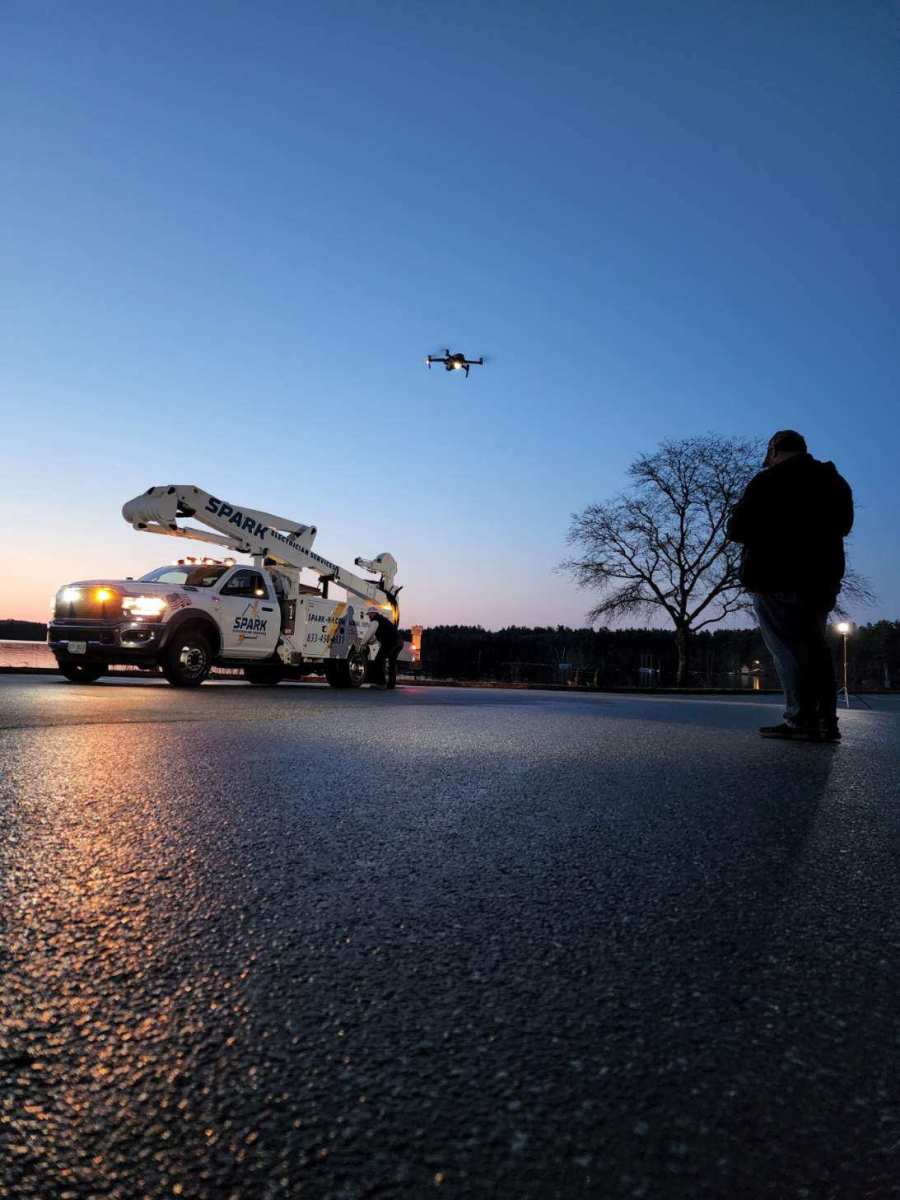One aspect I find most interesting is how strange trees look from the top down, which makes sense when you think about it, but when you see it for the first time you almost aren’t sure what you are looking at!
Selecting a Videographer
Since drones are so accessible, it seems like every one has one these days. However, only those licensed by the FAA are permitted to operate drones for commercial purposes. When selecting a videographer, make sure you ask to see a copy of their Part 107 license and a copy of their drone liability insurance. This way you will be able to filter out the professionals from the hobbyists. When you hire a professional aerial videographer who is licensed, you can be assured you are contracting someone who has taken the appropriate safety training courses, has hands-on experience operating a drone in many situations and conditions, and understands the requirements for operating safely and legally.
Consumer/Prosumer Drones
Like with any camera equipment, there are varying levels of drones available to consumers and professionals. One of the most common brands is DJI and they are known for offering a wide line of options for consumers, with some priced at only a few hundred dollars. Many professional drone videographers will spend between $2,000 and $4,000 on their drone, with one of the more popular models in that price range currently being the DJI Mavic 3 Pro, DJI Mavic 3 Cine, and Autel Robotics EVO II Pro. These are what are referred to as “prosumer” drones. They are still considered consumer drones but are on the higher end.
Professional Cinema Drones
Then there is the world of professional cinema drones. These are monstrous machines that can lift very heavy payloads and carry fully accessorized cinema cameras. Some are strong enough they can lift a person off the ground! These drones are typically over $10,000 to start, with some costing as much as $30,000. These drones require a team of at least two, but more often than not, three people: One person to fly and operate the drone, another person to operate the camera, and a third person to act as a visual spotter. Models in this range consist of the DJI Matrice 300, Newton AERIGON, Arcsky X55, and MFD 5000.
Selecting a Location, Permitting, and Flight Conditions
Even after you’ve done all of your homework and selected and vetted your videographer, there are still a few hurdles to overcome.
Locations
Choosing a location is the first important task to complete. The reason this is so important and what most people, including unlicensed operators don’t realize, is that you CANNOT fly anywhere you wish. Common sense would tell you that you cannot fly over an airport, but depending on the airport there are certain arrival and departure lanes you cannot enter and altitude limitations that need to be verified before you fly. You also cannot fly over military institutions, certain government buildings, and national parks.
Permits
Once you’ve settled on a location, you need to determine if permitting is required. Depending on whether or not there are any airspace restrictions you may need to request a permit 90 days in advance of your scheduled flight. Not all permit requests get approved; if rejected, you will need to find a new location that either doesn’t require permitting or will allow you to obtain a permit.
Weather Conditions
Assuming you find a location and secure a permit, now you have to deal with Mother Nature. Most drones are not designed to be operated in rainy conditions as they have air ventilation ports that would expose the electronics to moisture, resulting in a short circuit and, potentially, a crash. You can fly your drone in light winds, but once gusts reach two-thirds of the maximum drone speed, it is advised you land. The onboard controller on most drones will monitor how hard the drone is working to stay level and if the drones attitude (horizontal position in relation to the horizon) becomes too extreme, it will recommend immediate landing.
In Conclusion
That was a lot of information to say this one thing: Hire a professional. Even though it may cost a little extra, there is a reason that it costs that much. The investment in training, licensing, insurance, and equipment is expensive. But really you are paying for professionalism and safety. If you hire an unlicensed drone operator and they crash a drone and cause damage to someone else’s property, you will both be liable. Do not take any chances and make sure you do your homework. Thank you for reading! This article is accurate and true to the best of the author’s knowledge. Content is for informational or entertainment purposes only and does not substitute for personal counsel or professional advice in business, financial, legal, or technical matters. © 2022 Mike Gentile





